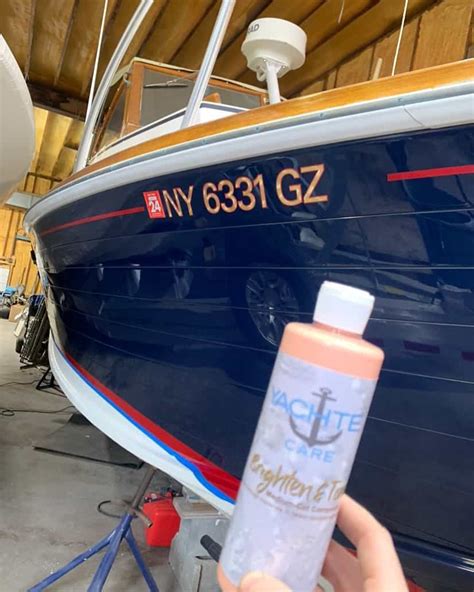Boat Buffing: Choosing the Right Products for a Sparkling Finish
Maintaining a boat's gleaming finish requires more than just a quick rinse. Regular boat buffing is key to protecting your investment and keeping your vessel looking its best. However, with a plethora of products on the market, choosing the right ones can feel overwhelming. This comprehensive guide will walk you through selecting the ideal boat buffing products, ensuring you achieve a sparkling, showroom-worthy shine.
What are the Different Types of Boat Buffing Compounds?
Before diving into specific product recommendations, understanding the various types of boat buffing compounds is crucial. These compounds are categorized primarily by their abrasiveness:
-
Cutting Compounds: These are the most aggressive, designed to remove heavy scratches, oxidation, and ingrained dirt. They're typically used for severely weathered or damaged gelcoat. Expect a more laborious process with these, and always test in an inconspicuous area first.
-
Rubbing Compounds: Less abrasive than cutting compounds, rubbing compounds refine the surface after a cutting compound, removing lighter scratches and swirl marks. They leave a smoother finish than cutting compounds, preparing the surface for polishing.
-
Polishing Compounds: These are the least abrasive, primarily focusing on enhancing gloss and shine. They don't remove significant imperfections but create a deep, brilliant finish. They're typically used as the final step in the buffing process.
-
Wax: While not strictly a buffing compound, wax is an essential final step. It provides UV protection, water repellency, and further enhances the shine, protecting your hard work.
What are the Key Factors to Consider When Choosing Boat Buffing Products?
Selecting the right boat buffing products depends on several factors:
-
Boat Material: Gelcoat is the most common material, but some boats have fiberglass, painted surfaces, or other finishes. Always check the manufacturer's recommendations for your specific boat type and material. Using the wrong compound on the wrong surface could cause irreversible damage.
-
Condition of the Gelcoat: Is your gelcoat heavily oxidized, scratched, or just slightly dull? The severity of the damage will determine the abrasiveness of the compound you need.
-
Your Budget: High-quality products generally provide superior results, but there are good options available at different price points.
-
Ease of Use: Some compounds are easier to apply and remove than others. Consider your experience level and choose products that align with your skills.
What type of buffer should I use?
Choosing the right buffer is just as critical as choosing the right compound. There are two main types:
-
Rotary Buffer: These are powerful and efficient, ideal for removing heavy imperfections. However, they require skill and practice to avoid burning through the gelcoat. Incorrect use can easily damage the boat's surface.
-
Dual-Action (DA) Buffer: These are less aggressive and more user-friendly, making them ideal for beginners. They minimize the risk of burning the gelcoat while still delivering excellent results.
Many boat owners opt for a DA buffer for ease of use, especially when tackling larger vessels.
What are the Best Boat Buffing Products for Beginners?
For beginners, a dual-action polisher combined with a reputable brand’s rubbing and polishing compound is recommended. Look for a kit that includes the polisher, pads, and a selection of compounds. Start with a milder compound and gradually progress to more aggressive options if needed.
How often should I buff my boat?
The frequency of buffing depends on several factors, including environmental conditions (sun exposure, saltwater), usage, and the type of finish. A good rule of thumb is at least once or twice a year for most boats.
What are some of the best-known brands of boat buffing products?
Several reputable brands consistently deliver high-quality boat buffing products. Researching specific product reviews from experienced boat owners will help you make the right choice for your needs and budget. However, avoid focusing solely on brand name and always assess the compound type and your boat's specific needs.
Can I buff my boat myself, or should I hire a professional?
While DIY buffing is achievable, it demands patience, attention to detail, and the right tools and techniques. If you lack experience or confidence, consider hiring a professional detailer. They possess the expertise and equipment to achieve flawless results, saving you time and effort, especially for larger boats.
By understanding the different types of compounds, considering your boat's condition, and choosing appropriate equipment, you can confidently tackle the task of boat buffing, restoring your vessel’s shine and protecting its longevity. Remember to always follow manufacturer instructions carefully and start with a test area before applying any product to the entire boat.

